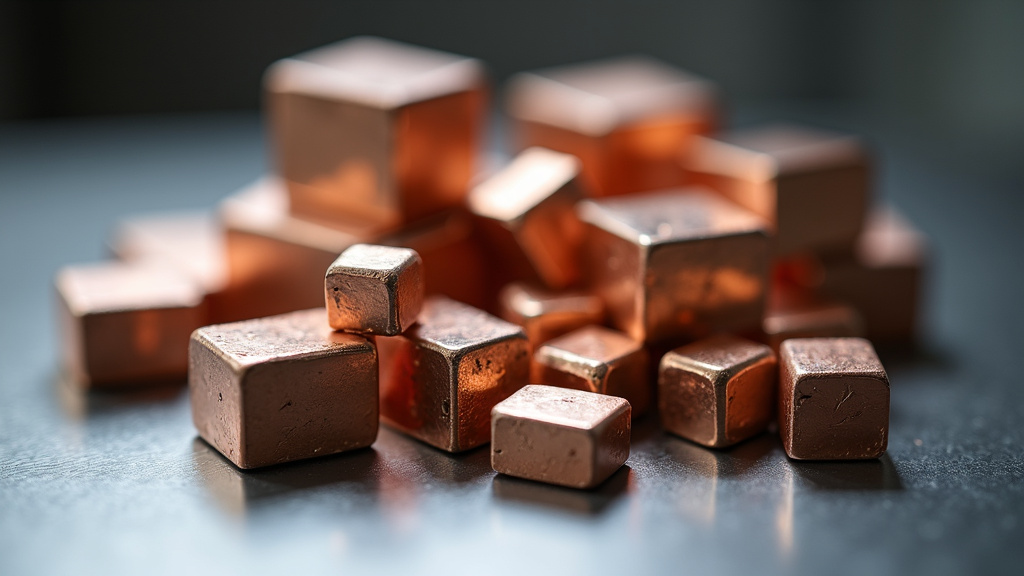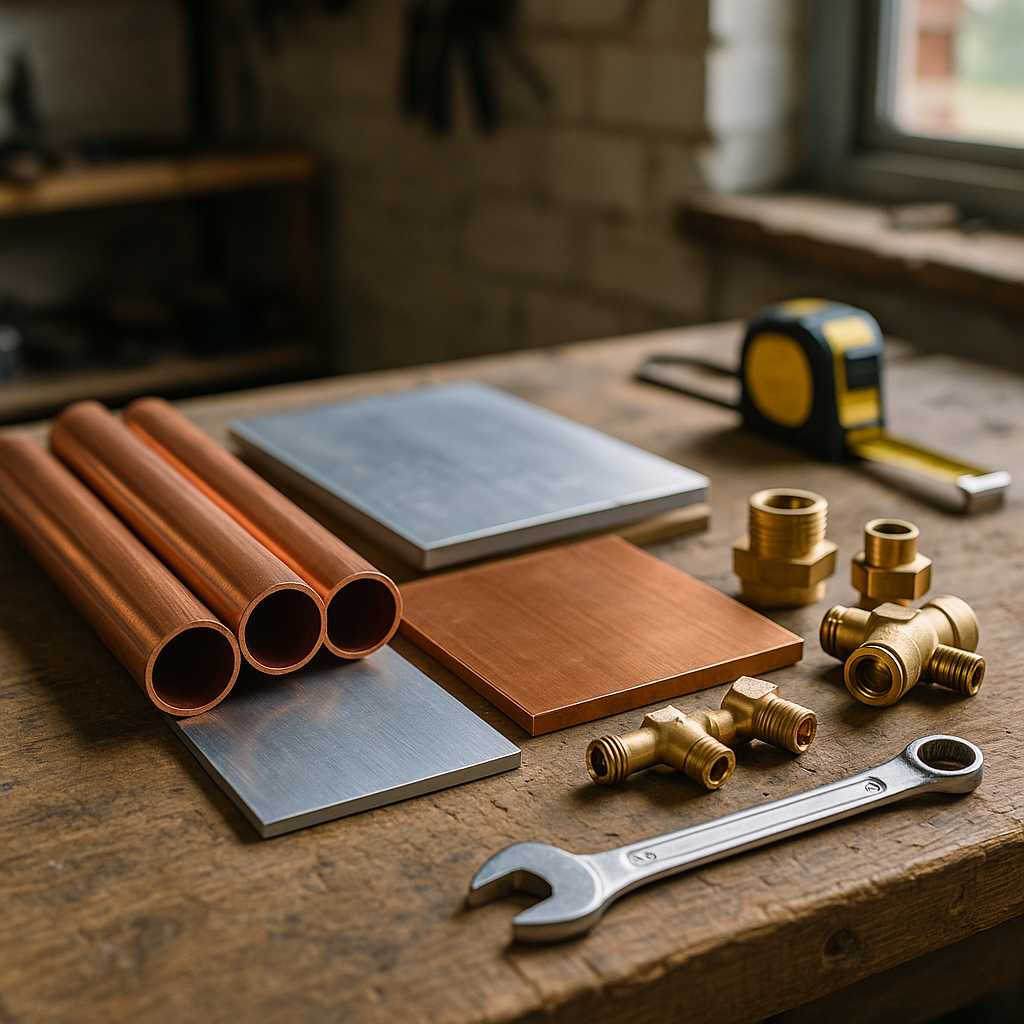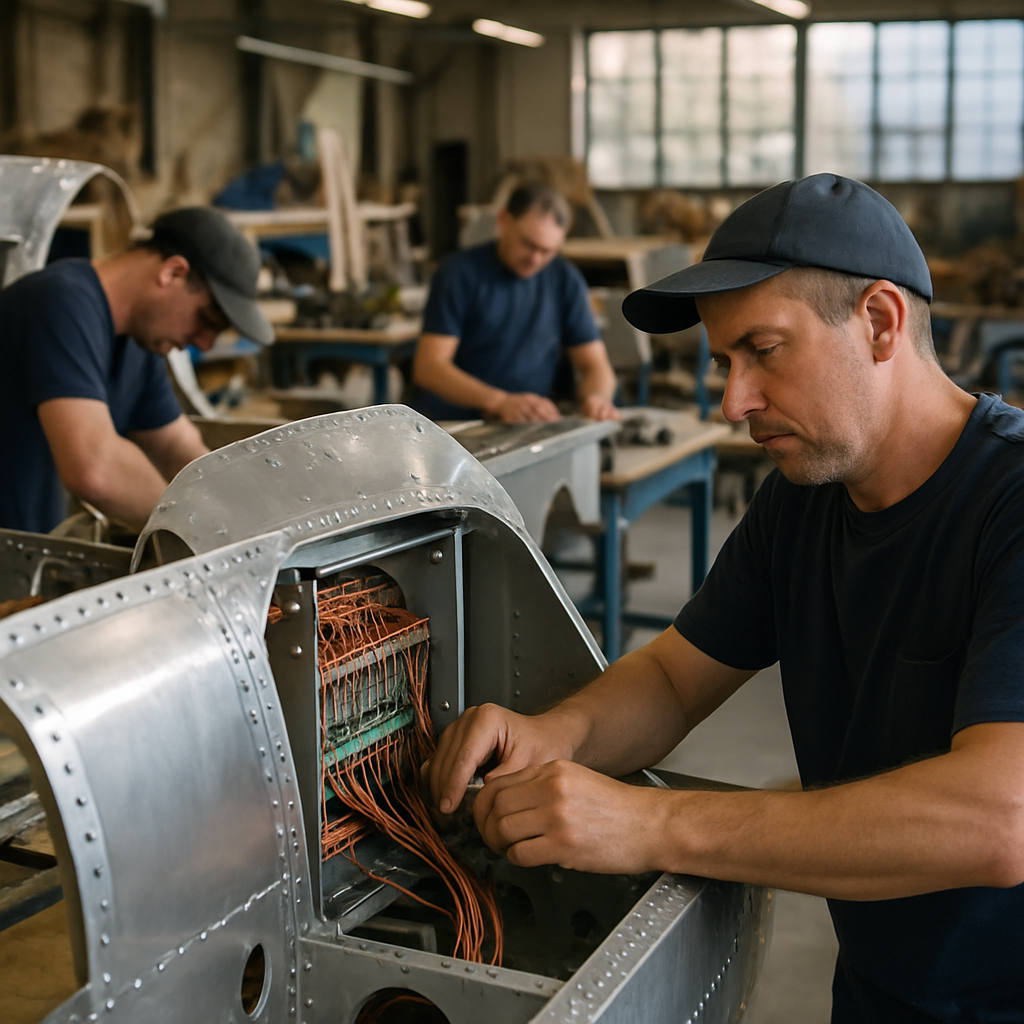5901 Botham Jean Blvd, Dallas, TX 75215
Non-Ferrous Metal Properties: Everything You Need to Know
July 17, 2025Non-ferrous metals are those metals or alloys that do not contain iron as a main component. Unlike their ferrous counterparts, these metals offer distinctive properties making them valuable across various industries. Common examples include aluminum, copper, lead, zinc, titanium, and nickel, along with precious metals like gold and silver.
The defining feature of non-ferrous metals is their lack of iron content, which grants them several benefits over ferrous metals, including superior resistance to rust and corrosion. Non-ferrous metals are generally lighter yet maintain excellent mechanical strength. Their non-magnetic properties make them ideal for electronics and electrical applications, while their high conductivity ensures efficient heat and electrical transfer.
These metals have influenced human history since ancient times. Copper was one of the first metals used by early civilizations, marking the beginning of the Copper Age, while the discovery of bronze – an alloy of copper and tin – initiated the Bronze Age. Today, non-ferrous metals remain essential in modern manufacturing, from lightweight aircraft components to corrosion-resistant plumbing systems and high-conductivity electrical wiring.
What Are the Key Properties of Non-Ferrous Metals?

Non-ferrous metals possess a range of valuable properties that make them highly sought after across numerous industries. Unlike their ferrous counterparts, these metals contain no significant amounts of iron, giving them distinct characteristics that are crucial for specific applications where iron-containing metals would not perform adequately.
Exceptional Corrosion Resistance
One major advantage of non-ferrous metals is their superior resistance to rust and corrosion. Without iron content, these metals don’t oxidize like ferrous metals when exposed to moisture and air. This makes them ideal for outdoor applications and environments with high humidity or chemical exposure.
Aluminum, copper, and zinc are often used in roofing materials, gutters, and outdoor fixtures because they maintain integrity in harsh weather conditions. The marine industry relies heavily on non-ferrous metals like brass for hardware and fittings that can withstand constant exposure to saltwater without deteriorating.
Lightweight Yet Strong
Many non-ferrous metals offer an excellent strength-to-weight ratio. Aluminum, for instance, weighs about one-third as much as steel while still providing considerable structural strength. This lightweight quality makes non-ferrous metals valuable in transportation industries where fuel efficiency is crucial.
The aerospace sector depends on lightweight metals like aluminum and titanium to reduce aircraft weight while maintaining structural integrity. Similarly, the automotive industry increasingly uses aluminum components to improve fuel economy without compromising safety or performance.
Superior Electrical and Thermal Conductivity
Non-ferrous metals like copper and aluminum exhibit exceptional electrical and thermal conductivity. Copper remains the industry standard for electrical wiring due to its ability to conduct electricity with minimal resistance, essential for efficient power transmission and electronics manufacturing.
The thermal conductivity of these metals also makes them excellent for heat exchangers, radiators, and cooling systems. Copper’s ability to transfer heat quickly and efficiently explains its widespread use in plumbing and HVAC applications.
Non-Magnetic Properties
The absence of iron gives non-ferrous metals non-magnetic characteristics, making them indispensable in applications where magnetic interference would cause problems. This property is crucial for electronic devices, navigation equipment, and certain medical instruments.
Industries like telecommunications and electronics manufacturing rely on the non-magnetic properties of metals such as aluminum and copper to ensure signal integrity and prevent electromagnetic interference in sensitive equipment.
High Recyclability
Non-ferrous metals maintain their physical properties during the recycling process, making them highly recyclable with minimal quality degradation. This characteristic is particularly valuable in today’s sustainability-focused economy.
Nearly 80 percent of all copper ever mined is still in use today thanks to effective recycling programs. Aluminum recycling requires just 5% of the energy needed to produce virgin aluminum, making it one of the most energy-efficient materials to recycle. This recyclability significantly reduces waste and conserves natural resources.
Aesthetic Appeal
Many non-ferrous metals possess natural beauty and luster, making them desirable for decorative and architectural applications. Copper develops a distinctive green patina over time, while brass and bronze offer warm, golden tones prized in interior design and architectural details.
The ability of these metals to take on various finishes and maintain their appearance over time makes them popular for visible components in buildings, furniture, and decorative items.
| Metal | Tensile Strength | Resistance to Rust/Corrosion | Electrical and Thermal Conductivity | Boiling Point | Melting Point | Common Application |
|---|---|---|---|---|---|---|
| Titanium | High | Excellent | Poor | 3287°C | 1668°C | Automotive, aerospace, medical |
| Nickel | High (at elevated temperature) | Excellent | Good | 2913°C | 1453 °C | Batteries, energy and power, electrical and electronics, chemicals |
| Copper | Good | Excellent | Excellent | 2595°C | 1083°C | Electronic, energy, construction, tools |
| Aluminum | Medium | Excellent | Good | 2470°C | 660°C | Aerospace, automotive, construction |
| Bronze | High | Good | Excellent | 2300°C | 950°C | Coins, instruments, statues, automobile |
| Lead | Low | Excellent | Poor | 1749°C | 328°C | Ammunition, battery, radiation shielding |
| Brass | High | Good | Good | 1100°C | 900-940°C | Plumbing, electrical, aircraft, musical instruments |
| Zinc | Low | Good | Medium | 907°C | 420°C | Solar panels, handrails, car bodies |
These unique properties make non-ferrous metals invaluable across sectors ranging from construction and electronics to transportation and artistic applications. As recycling technology advances, the environmental and economic benefits of recovering and reusing these valuable materials continue to grow, making them an increasingly important part of sustainable waste management strategies.
What Are Common Types of Non-Ferrous Metals?

Non-ferrous metals are materials that do not contain iron as their primary component. These metals are valued for their unique properties such as corrosion resistance, lightweight nature, and high conductivity. Let’s examine the most common types found across industries today.
Common Industrial Non-Ferrous Metals
Several non-ferrous metals serve as the backbone of modern manufacturing. Aluminum leads this category as the most abundant metal in the earth’s crust. It’s lightweight yet strong, making it perfect for applications ranging from aircraft frames to food packaging. The transportation industry particularly values aluminum for its excellent strength-to-weight ratio.
Copper stands out for its exceptional electrical and thermal conductivity. It is essential for electrical wiring, plumbing systems, and heat exchangers. This reddish-brown metal naturally forms a protective layer called patina when exposed to air, preventing further corrosion and giving older copper structures their distinctive green appearance.
Zinc offers excellent corrosion protection, which is why it is commonly used to galvanize steel. It’s also a key component in die-casting alloys for automotive parts. Despite health concerns limiting modern applications, lead remains important for batteries, radiation shielding, and some specialized uses where its density and sound-dampening properties are beneficial.
High-Performance Non-Ferrous Metals
Titanium represents the high-performance category of non-ferrous metals. It combines remarkable strength with low density and outstanding corrosion resistance. While more expensive than many other metals, titanium’s exceptional properties make it invaluable for aerospace components, medical implants, and high-stress applications.
Nickel shows impressive heat and corrosion resistance, making it crucial for turbine blades, chemical processing equipment, and marine applications. Its ability to maintain structural integrity at extreme temperatures explains its widespread use in demanding environments.
Tin offers a low melting point combined with excellent corrosion resistance. It is commonly used as a protective coating for steel in food containers and serves as a key component in soldering alloys for electronics.
Precious Non-Ferrous Metals
Precious metals form a special category of non-ferrous materials. Gold stands unmatched in corrosion resistance and malleability. Beyond its monetary value, it serves critical roles in electronics, dentistry, and aerospace applications where reliability is paramount.
Silver boasts the highest electrical conductivity of any element, making it invaluable for specialized electrical contacts. It also finds use in photography, mirrors, and medical applications due to its antimicrobial properties.
Platinum shows exceptional resistance to chemical corrosion and high-temperature stability. These properties make it essential for catalytic converters, laboratory equipment, and electrical contacts in harsh environments.
Important Non-Ferrous Alloys
Non-ferrous alloys combine the properties of different metals to create materials with enhanced characteristics. Brass, an alloy of copper and zinc, offers better strength than pure copper while maintaining good conductivity. Its golden appearance and excellent machinability make it popular for decorative fixtures, musical instruments, and plumbing components.
Bronze, traditionally a mixture of copper and tin, provides greater hardness and durability than pure copper. Modern bronze alloys may include aluminum, silicon, or other elements to enhance specific properties. Bronze has applications in bearings, marine hardware, and sculptures due to its corrosion resistance and attractive appearance.
Aluminum alloys incorporate elements like magnesium, silicon, or copper to improve strength, workability, or corrosion resistance. These alloys enable the precise tailoring of material properties for specific applications, from aircraft structures to consumer electronics.
| Non-Ferrous Metal | Properties | Applications |
|---|---|---|
| Aluminum | Lightweight, high thermal and electrical conductivity | Aerospace, automotive, packaging, electronics |
| Copper | Exceptional electrical and thermal conductivity, corrosion resistance | Electrical wiring, plumbing, heat exchangers |
| Titanium | High strength-to-weight ratio, corrosion resistance | Aerospace, medical implants, marine applications |
| Zinc | Corrosion resistance | Galvanization, die-casting alloys |
| Nickel | Heat and corrosion resistance | Turbine blades, chemical processing equipment |
| Lead | Sound-dampening, radiation shielding | Batteries, construction materials |
Each non-ferrous metal brings unique advantages to modern manufacturing and engineering. Their diverse properties enable everything from everyday consumer products to advanced aerospace components. As manufacturing techniques advance, these materials continue to find new applications across virtually every industry.
How Are Non-Ferrous Metals Used in Industry?

Non-ferrous metals play a crucial role across multiple industries due to their unique properties that ferrous metals cannot match. These metals, which contain little to no iron, offer exceptional characteristics such as lightweight strength, superior conductivity, corrosion resistance, and non-magnetic properties, making them indispensable in modern manufacturing.
Aerospace Applications
The aerospace industry relies heavily on non-ferrous metals to create aircraft and spacecraft components that are both lightweight and durable. Aluminum, with its exceptional strength-to-weight ratio, comprises approximately 80% of aircraft frames. From fuselages and wings to floors and seats, aluminum’s properties enable fuel efficiency without compromising structural integrity.
Titanium alloys have become equally crucial in aerospace applications where extreme conditions demand superior performance. These alloys maintain their strength at high temperatures and resist corrosion from aviation fuels and hydraulic fluids. Engine components, landing gear, and critical structural elements often utilize titanium for its exceptional resilience in demanding environments.
Electronics Industry
Modern electronics would be impossible without non-ferrous metals. Copper is fundamental to electrical systems worldwide due to its outstanding conductivity. From power transmission lines to circuit boards and cooling systems, copper efficiently transfers electricity and heat with minimal energy loss.
Gold, despite its cost, serves critical functions in electronics as a corrosion-resistant conductor for connection points. Its reliability in small quantities makes it ideal for smartphones, computers, and other devices where consistent performance is essential. Meanwhile, aluminum serves as an economical alternative to copper in many applications, including heat sinks and component housings.
Construction Applications
The construction industry values non-ferrous metals for their durability and aesthetic qualities. Copper roofing and flashing can last centuries while developing an attractive patina that enhances its protective properties. Zinc provides similar longevity when used for roofing, gutters, and galvanizing steel.
Aluminum has revolutionized modern architecture with lightweight extrusions for windows, doors, and curtain wall systems. Its corrosion resistance eliminates the need for constant maintenance, while its formability allows architects to create innovative designs that would be impossible with heavier materials.
Healthcare and Medical Technology
The biocompatibility of certain non-ferrous metals makes them invaluable in healthcare applications. Titanium’s non-reactive nature with human tissue has made it the standard for orthopedic implants, dental fixtures, and surgical instruments. Patients with titanium hip replacements or dental implants benefit from components that integrate with bone tissue while resisting corrosion from bodily fluids.
Copper alloys serve another critical healthcare function through their natural antimicrobial properties. Hospital fixtures, door handles, and surfaces made from copper can actively kill bacteria, reducing infection risks in clinical settings. This property has become increasingly important as healthcare facilities combat antibiotic-resistant pathogens.
Sustainable Manufacturing Practices
A valuable aspect of non-ferrous metals is their recyclability. Unlike many materials that degrade during recycling, most non-ferrous metals maintain their properties through multiple recycling cycles. Aluminum recycling uses only 5% of the energy required for primary production, while copper and zinc can be reclaimed and reused with minimal quality loss.
The circular economy benefits tremendously from non-ferrous metal recycling. Manufacturers increasingly design products with end-of-life recovery in mind, creating closed-loop systems where valuable metals return to production rather than entering landfills. This practice not only conserves natural resources but also reduces the environmental impact of mining and refining operations.
The versatility of non-ferrous metals continues to expand as manufacturing technologies advance. From traditional applications to cutting-edge technologies like 3D printing with titanium powders, these metals remain at the forefront of industrial innovation. Their combination of performance characteristics ensures they will continue to be crucial materials across diverse industries for decades to come.
Conclusion: The Importance of Non-Ferrous Metals
Non-ferrous metals have become indispensable materials in our modern world. Their unique properties—lightweight, corrosion-resistant, excellent conductivity, and non-magnetic—make them crucial across numerous applications. From aluminum in aircraft frames to copper in electrical systems, these metals continue to advance technology, manufacturing, and sustainable development.
The recycling potential of non-ferrous metals offers significant benefits in our increasingly resource-conscious society. Their ability to be recycled without losing essential properties supports circular economy principles and minimizes environmental impact.
For organizations seeking to implement sustainable waste management practices that include the proper recycling of valuable non-ferrous metals, contact Okon Recycling at 214-717-4083.
